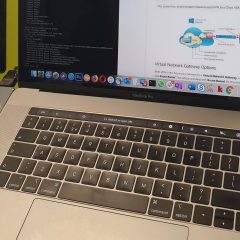Cisco ASA – Packet Tracer Fails VPN:Encrypt:Drop
KB ID 0001198 Problem Sometimes when troubleshooting VPN traffic, you may choose to use the ‘packet-tracer’ command to simulate interesting traffic. I did this today and got; Phase: {number} Type: VPN Subtype: encrypt Result: DROP Config: Additional Information: Result: Drop-reason: (acl-drop) Flow is denied by configured rule I replicated the error on the test bench. Solution Below is the full packet trace;...
MAC OSX – Connecting to Cisco IPSEC VPN
KB ID 0001197 Problem Here we are dealing with the older IPSEC VPN method of remote VPNs, NOT AnyConnect. There is/was a VPN client for Mac OSX which you can still download. But modern versions of OSX have the Cisco IPSec VPN client built into them. I’m assuming you have already configured the firewall, if not see the article below; Cisco ASA5500 Client IPSEC VPN Access Solution Open your network preferences and add in a new...


